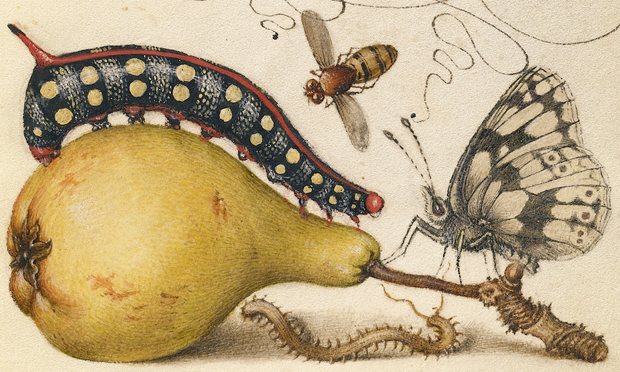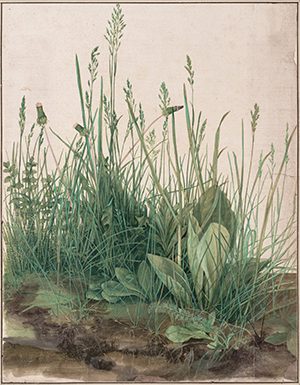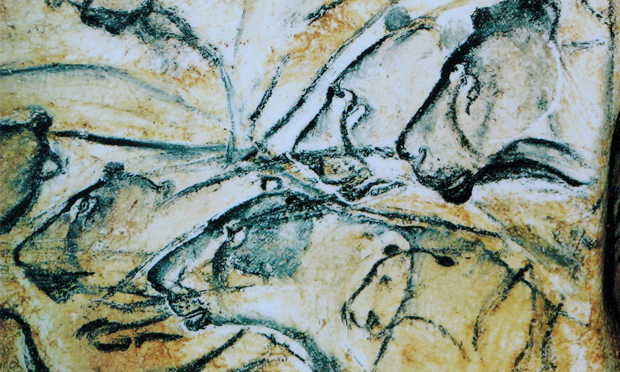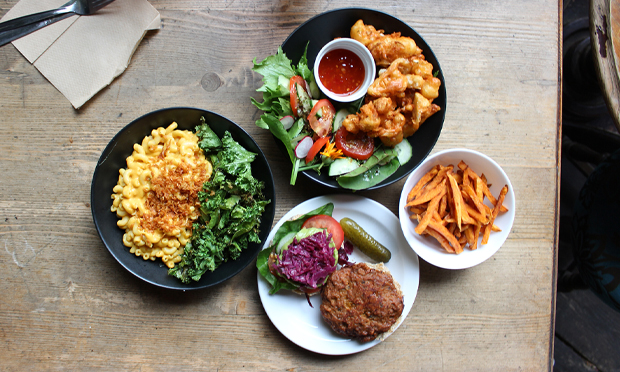‘Deities, not dinner’: Hackney and a plant-based past

Joris Hoefnagel’s illumination of a caterpillar, from Mira calligraphiae monumenta (c. 1561)
When Anna Letitia Barbauld felt a tickle on her arm, her instinct was to brush the plump little caterpillar off and stamp on it.
Then her finer feelings told her that it had as much right to a life as she had, and watching it totter away to safety, her compassionate reaction took the form of a short poem:
No, helpless thing, I cannot harm thee now;
Depart in peace, thy little life is safe,
For I have scanned thy form with curious eye,
Noted the silver line that streaks thy back,
The azure and the orange that divide
Thy velvet sides; thee, houseless wanderer,
My garment has enfolded, and my arm
Felt the light pressure of thy hairy feet;
Thou hast curled round my finger; from its tip,
Precipitous descent! with stretched out neck,
Bending thy head in airy vacancy,
This way and that, inquiring, thou hast seemed
To ask protection; now, I cannot kill thee…
Another of Barbauld’s poems, to a caged mouse, had the same message, that the oppressed creature had a right to life and liberty This was not an emotional rant, but a reasoned argument, which is probably why dreary old William Wordsworth dismissed Barbauld as a mere schoolteacher, lacking in romantic sensibilities.
Anna Letitia wrote this in Stoke Newington, thus giving Hackney a claim to be the birthplace of the Animal Rights movement. She and her contemporaries, all linked to the Dissenting Chapel on Newington Green, campaigned for Women’s Rights, religious toleration, and the anti-slavery movement. ‘Am I not a Man and a Brother?’ was their slogan. Barbauld’s poem was not just a rhyme for children, but a message (‘When sympathy rises to anguish’ as Mary Wollstonecraft wrote of war damage in Copenhagen) about how we relate to animals and each other.

What a Stone Age vegan meal might have looked like, courtesy of Albrecht Dürer’s The Large Piece of Turf (1503)
Hackney has always been a refuge for those escaping from the tyranny of religious orthodoxy, or social and political pressures to conform, or the health hazards of city life. Newington Green will forever be linked to Mary Wollstonecraft and her passionate feminism, while her daughter Mary Shelley, a convinced vegetarian, eloped with the poet Percy Bysshe Shelley, another vegetarian, and imagined a vegetarian monster, created by Dr Frankenstein, whose redeeming feature was his eventual reluctance to harm and kill living things.
Vegetarianism was as much a way of life as a crusade, according to Shelley: ‘The pleasure or taste to be derived from a dinner of potatoes, beans, peas, turnips, lettuces, with a desert of apples, gooseberries, strawberries, currants, raspberries, and in winter, oranges, apples, and pears, is far greater than supposed.’
John Wesley, in his church just off Old Street, felt the same, ‘Thanks be to God! Since the time I gave up the use of flesh-meats and wine, I have been delivered from all physical ills.’ Glad to have the prophet Isaiah on his side: ‘On the new earth, no creature will kill, or hurt, or give pain to any other.’
Thanks to the intrepid work of the Citizen’s restaurant reviewers Hackney is well-informed about the delights of vegan and vegetarian eating, prepared without meat, fish or dairy products, by a new generation of brilliant young cooks, who take the vegan message and bash it around a bit, with inventive cheerful hedonism.
But thoughts about vegan food can be deep and disturbing, nothing to do with our shrieks of delight at bowls of goodness awash with innovative blobs of quinoa, or amusing toppings of lightly toasted unheard-of seeds.
Caveman diet
Concern about what we eat and how we come by it, along with wider worries about our relationship to the animal world are uncomfortable, to say the least. We can put things in perspective by looking at cave art in the Stone Age.
Primitive man was outnumbered by animals; many of them could pursue him, knock him down, tear him apart and devour his still beating heart with ease and efficiency. He was in awe of them, their power, fecundity, beauty and strength.
Cave art seems, according to some historians, to tell how we worshipped these creatures not as food, but as superior beings. Our diet was probably mixed – grains, shoots, roots and green stuff, with the odd bird’s egg and small animal, but none of these appear in cave art.

A recreation of the lions painted in France’s Chauvet Cave
The animals in the Chauvet cave are on the move, as they must have been seen by the artists who painted them, gazing across the plains as herds surged past the cave opening and fierce predators crouched in wait. You can see the gleam in a panther’s eye, and the direct gaze of a mournful auroch in these paintings. These were deities, not dinner.
Wild boar
Centuries later the Catholic church had a more pragmatic approach to meat eating. Days of fasting or abstinence were to encourage penitence and repentance, but got us used to a non-meat diet. Respect for the sacrificial lamb, or the useful pig, was encouraged.
The Renaissance painter Giotto, out walking with friends, was knocked down by a gang of joyful pigs. When he had picked himself up the great man said ‘Well, fair’s fair, I’ve made myself millions using your bristles in my paintbrushes, and never offered you a thing…’
The reciprocity is acknowledged, as is the lifestyle of a normal pig – an animal that rampages around in groups, foraging and causing havoc. An escaped pig can wreck a cottage garden in minutes, and I have seen a Tuscan vineyard ruined in a night’s rummaging by a few wild boars.
Today these wild boars are being culled, which upsets Animal Rights folk, and also the hunters. But some say these were not native animals anyway, but a disastrously prolific strain of wild pig introduced by hunters from Eastern Europe, for the benefit of the sport and for the money to be made out of wild boar meat (see recipe next month), showing how the fun of killing wild animals can also be a nice little earner.
So here we are back home, having tamed the wild ones, putting genetically modified pigs, waterlogged zombies fed with antibiotics and hormone treatment, into small cages in which there is hardly room to stand, to fatten up rapidly, and so provide cheap protein for us all.

A typical modern vegan meal, courtesy of Hackney’s Cafe SoVegan. Photograph: Jade King
Henpecked
But it gets worse, think of your breakfast egg.
The hens that produce it are creatures whose nature in the wild is to scratch, peck, and roost. They need space for this, (a posse of free-range hens can reduce a green meadow to an arid dustbowl in a few weeks) and when they go to bed they want to flutter high up and well out of harm’s reach. How can they do this confined in a cage in which they can barely turn round? How can we rear them humanely and get cheap eggs and those yucky nuggets?
Recent outrage about unhygienic chicken processing plants is all about how the dead birds are handled, when the real scandal is the horrible conditions in which they were reared and killed.
What is really depressing is that deliberately renouncing these practices and eating only ethically produced food, available in Hackney’s farmers markets, and many food stores, is unlikely to change the onward march of agribusiness, lining shareholders’ pockets while exploiting the legitimate need of the low waged for reasonably priced food. Perhaps Giotto’s pragmatism, and Barbauld’s compassion, can help us make our own choices.
